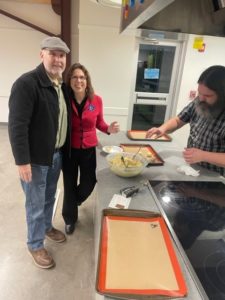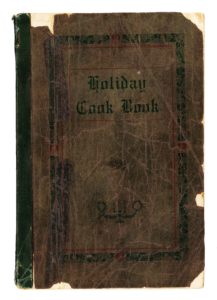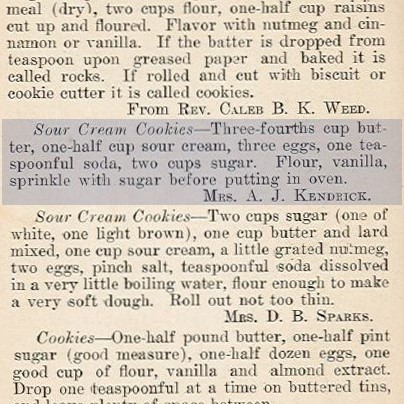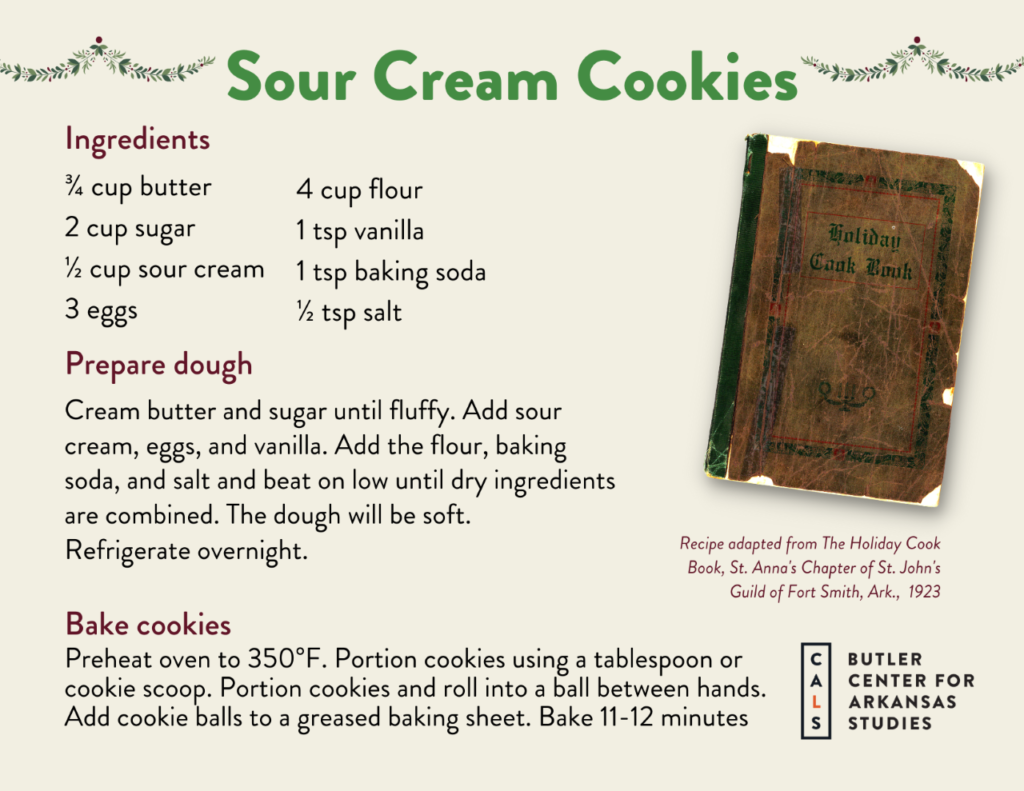calsfoundation@cals.org
Cooking Up History: The Story Behind the Cookie

Led by community outreach archivist Danielle Afsordeh, on December 12, 2022, several patrons gathered at the CALS Dee Brown Library to learn about how Arkansans have celebrated Christmas over the state’s history. With the help of kitchen programmer Justin Vess, the group also baked cookies using a 1923 sour cream cookie recipe from the collection of the CALS Butler Center for Arkansas Studies.
Recipes during the early twentieth century typically didn’t contain helpful information that we rely on in modern recipes such as standard measurements, baking temperature, or cooking duration. This is largely because stoves from the period didn’t have temperature gauges and relied on coal burning to heat them, so the temperature was inconsistent. Additionally, standard measurements differed regionally, so they were often left out of recipes. Bakers relied on their own skill and attention to get bakes just right. Vess really put in some extra labor to figure out the exact measurements, temperature, and cooking time for our cookies!

The recipe came from the 1923 Holiday Cookbook published by the St. Anna’s Chapter of St. John’s Guild of Fort Smith, Arkansas; the Butler Center recently added the volume to its collection. The St. John’s Guild is a Catholic charitable organization. The author of the recipe is identified as Mrs. A. J. Kendrick in the cookbook. (This rendering of her name was common for society women in the early twentieth century—often, the only historical mentions of these women in newspapers and other media are by their husbands’ names.)
A little genealogical sleuthing using marriage records, burial records, city directories, and census records uncovered that Mrs. A. J. Kendrick was born Minerva “Minnie” D. Hazen in August 1868 in Minneapolis, Minnesota. She married Albert Jewett (A. J.) Kendrick, a native of Indianapolis, Indiana, on Christmas Eve 1888—a fitting wedding date for the holiday season! A. J was a newspaper publisher who relocated with Minnie to Fort Smith in 1893 to start the Fort Smith News-Record. The paper ran from 1893 to 1908 and has many available issues online through Newspapers.com. Kendrick was the proprietor and editor of the paper from 1893 to 1903 when the family sold it for $6,000.
Minnie was an active member of the St. Anna’s guild likely from her arrival in the city. She hosted many events to support the organization. After A. J. Kendrick’s untimely death in 1908, she stayed in Fort Smith with her two children for a time. She remained active in society and continues to be mentioned in the local papers frequently throughout the 1910s. By 1920, Minnie had moved back to her hometown of Minneapolis and was residing with her parents after her children left home. Curious, then, is the fact that her recipe appears in a cookbook published in Arkansas in 1923.
After some additional investigating, it seems that this cookbook was originally authored in 1910 and was reprinted for many years after the fact. Minnie’s recipes continued to circulate in Arkansas long after she left and now have—along with her story—resurfaced thanks to the wonderful resources available at the CALS Roberts Library. (Visit us soon!)
Try your hand at the recipe here, with either version!


By Danielle Afsordeh, community outreach archivist, CALS Butler Center for Arkansas Studies/Roberts Library




